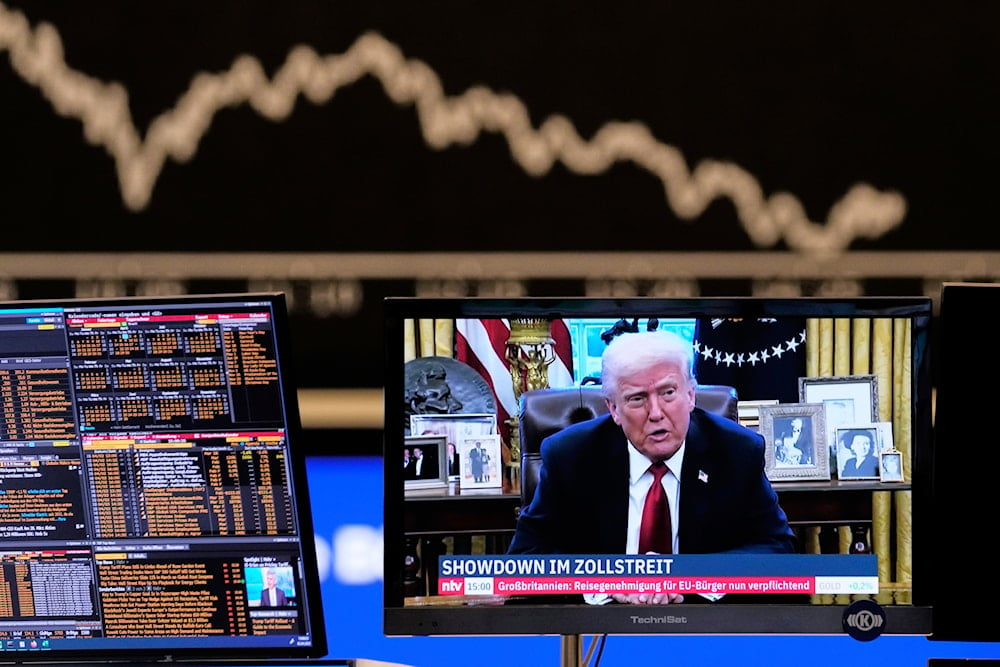Wall Street wipeout: $6.6T gone in two days, $11T since Trump’s return
While market weakness in the early phase of a presidency isn’t uncommon, analysts say the scale of this year’s losses is unprecedented.
-

US President Donald Trump appears on a television screen at the stock market in Frankfurt, Germany, Wednesday, April 2, 2025 (AP)
Since January 17—the Friday before President Donald Trump began his second term—approximately $11.1 trillion in market value has been erased from US stocks, according to Dow Jones Market Data.
A staggering $6.6 trillion of that was lost in just two days—Thursday and Friday—marking the largest two-day decline in shareholder value on record.
Markets were jolted midweek after Trump unveiled sweeping new tariffs that far exceeded expectations, catching many investors off guard. Since then, financial markets have intensified pressure on the administration to scale back the proposed levies or signal concrete progress on trade talks.
“The markets are begging for clarity,” said Kathleen Brooks, research director at XTB, in an emailed commentary. She noted that by Friday, investor sentiment remained deeply negative despite Trump’s attempt to reassure markets through a Truth Social post about a “productive phone call” with Vietnam’s leader. While shares of Nike Inc. (NKE)—which has significant factory operations in Vietnam—rose briefly, the move failed to calm broader market fears.
Dive deeper
Recession anxieties loomed large by Friday afternoon. Even a strong March jobs report couldn’t offset concerns. “If we are to punch back,” warned Jay Woods, chief market strategist at Freedom Capital Markets, “you could have damaging effects to not only the tech sector, but the economy overall. This could throw us into a recession and could end the bull market as we know it.”
By the week’s end, the S&P 500 had surpassed the early-term losses seen under George W. Bush, whose first 75 days in office marked a similarly volatile stretch. The Russell 2000 index, focused on small-cap stocks, recorded its worst-ever start to a new presidential term, according to FactSet.
Since Inauguration Day, the Dow Jones Industrial Average has dropped 11.9%, while the S&P 500 is down 15.4%. The Nasdaq, which reached a record close of 20,056.25 on February 19, has since plunged more than 22%, entering bear market territory along with the Russell 2000, which is now down over 25% from its November 25 peak.
Friday capped off the worst week for US stocks since March 2020.
While market weakness in the early phase of a presidency isn’t uncommon, analysts say the scale of this year’s losses is unprecedented. As Carson Group’s Ryan Detrick observed, stocks typically perform better in the third and fourth years of a presidential term, whereas “performance during the first quarter of year one tends to be particularly tepid.”
Read next: World's richest lose $208 bln in a day after new US tariffs announced

 3 Min Read
3 Min Read










